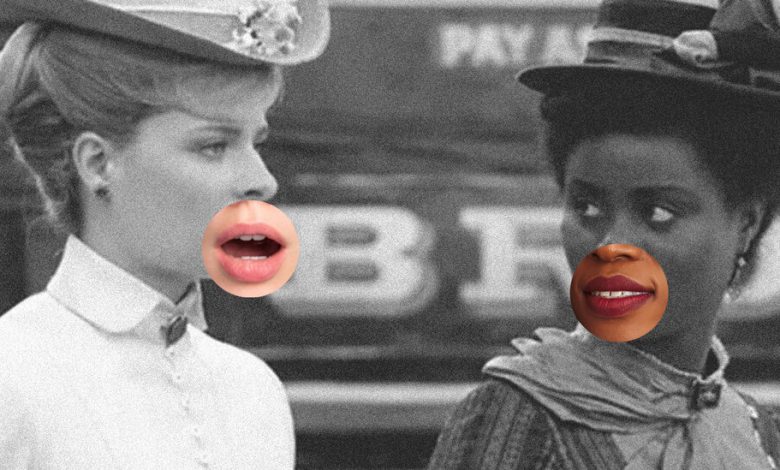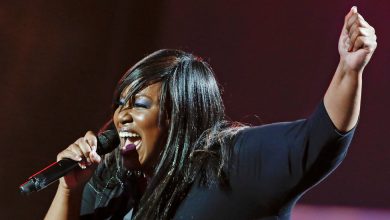The Virtues of Inauthenticity

My partner and I were eager to take in the ancient Greek sculptures at the Metropolitan Museum of Art that have been restored with the painted colors they would have had when new. The Greek sculptors adorned their work with vibrant colors that wore off over time.
I heartily salute the research involved in recreating the artists’ original visions, but frankly, we found the results pretty hideous. They summon a kind of 1950s color-by-numbers garishness, and I doubt I am anywhere near alone in feeling that way. The sculptures as we have known them, with the paint worn off, are more appealing.
The TV series “The Gilded Age” also offers a challenge to the idea that authentic is intrinsically better. This delightful confection, which I wrote about last year, is fairly described, given its creation by Julian Fellowes, as “Downton Abbey” in 1880s New York City. It has all the expected obsessive accuracy in terms of clothing, sets, food, etc., but one thing the show gets wrong is how people spoke. The characters speak as their modern equivalents would — and this is as it should be.
Upper-crust white New Yorkers in the 19th century and well into the 20th had the grand old accent often called mid-Atlantic, which sounded a lot like British English. R’s at the end of syllables tended to melt away: “Quarter” was a “kaw-tuh.” In 1880s New York, this r-lessness came off as normal. People grew up talking that way.
Franklin D. Roosevelt will come to mind for many, but perhaps more illustrative is his mother, Sara Roosevelt, who was born in 1854 and therefore learned to speak before the Civil War. She mostly grew up in a New York City suburb, and yet you’d believe she was raised in London, as you can hear in a 1930s interview clip here. Those of a certain age may also remember the actress Jane Wyatt, who played the mother on the 1950s sitcom “Father Knows Best.” She was born in New Jersey in 1910 as a member of the Social Register set. When I was in college and reruns of the show were still a common memory, a friend used to imitate Wyatt saying “yaw fah-thuh” for “your father.” In this clip, note how “desires” is “de-zigh-uz” and “harmless” is “hohm-less.”
Even people raised in a place where this accent did not reign often mastered it when moving in certain circles. Cole Porter grew up in Indiana but as an adult sounded like Wyatt, as in this recording of his performance of his song “Anything Goes,” in which “bars” and “parties” are “bahs” and “pahties.”
But it would be artistically unfortunate if the white actors on “The Gilded Age” had been coached to speak this way. Today that accent sounds less refined than artificial; we would have to work to find characters who spoke this way to be intelligent, warm or even intimidating. In the film “Maestro,” Carey Mulligan pulls off a character with this accent in her magnificent portrait of Leonard Bernstein’s wife, Felicia. But my guess is that if we met Porter at a party today, we would find him to be something between exotic and unbearable — and certainly not relatable. And a show in which everyone spoke this way would be, for us moderns, a bit much.
The Black characters’ speech on the show is also inauthentic, and appropriately so. Black English, like all English and all language, changes over time, not just in the slang but also in the accent. Black English emerged in the South, and studies of its sounds in the 19th century reveal that in the dialect then, o’s were a lot like the ones famous in Minnesota’s dialect, with a clean “oh” rather than the sliding “oh-oo” most Americans have. This was also true of the “ay” pronunciation of “a” in early Black English — crisper, without the slide.
You can hear this in recordings of Black stage singers at the turn of the last century. George Walker and Bert Williams were musical theater’s Key and Peele of their era, and in recordings, Walker sounds kind of like the Scottish Mrs. Hughes on “Downton Abbey.” In the theater song “Pretty Desdemone,” the word “say” doesn’t have the slide off the way most of ours do today, and “Desdemone” is “desdeMOHn.”
This way of speaking sounds to the modern ear almost Caribbean. Family memories of my grandfather, who was born in 1899 and died before I was born, are sparse at this point. However, those still alive who met him as children remember that he sounded as if he were from the West Indies. Yet he grew up near Atlanta; he very likely had the old-school style of Black speech rather than the one that developed later.
This means that Black people of Southern origin from the 19th century portrayed in such films as “Lincoln” and “Django Unchained” did not sound as they’re depicted in those films, the way Black people do now. (And never mind that Lincoln actually had a highish, reedy voice, as in Daniel Day-Lewis’s portrayal, not the sonorous baritone we often expect from those playing him.)
The Black characters in “The Gilded Age” are mostly Northerners. How they would have sounded in the 1880s is more elusive to the researcherand would have varied according to class, education and life history. However, it is relevant that one would not even know from recordings of his voice that W.E.B. DuBois, raised in Great Barrington, Mass., in the 1860s, ’70s and ’80s, was Black. And overall, the Black English familiar to us today is the result of the original Southern dialect and its interactions with white English varieties after the Great Migration starting in the 1910s. This had not happened by the 1880s, and thus we can be sure that the Brooklyn Black gentry portrayed in “The Gilded Age” did not have the sound of Black English familiar today. However they sounded would, we can be sure, come off as unfamiliar and even somewhat odd to us today.
But there is no need to attend to any of this in modern dramatic depictions, and in fact, it would probably make for bad art. Speech is intimate, and its sounds and tones profoundly affect the way we process and respond to one another. The Caribbeanish tone of Black speakers of the gaslight era could blunt any lesson Black historical characters had to teach us about themselves or us, as would having a burgherly Black Northerner sound like Sara Roosevelt or her son. Sometimes a little inauthenticity has its uses.
The ending gag in the Bugs Bunny cartoon “Baseball Bugs” in 1946 has the Statue of Liberty coming briefly to life. As a kid, I found it strange that the statue was brown. But Lady Liberty was originally the copper color of a penny. The gorgeous green of today is the result of oxidation, which had changed her color by 1920. When the cartoon was made, the original hue was a living memory, and the artists in this case apparently still thought of it as the statue’s real color.
But even in the ’20s, people didn’t want the statue to be restored to the original, and I’m with them. The copper shade was undramatic in comparison with the way today’s green pops, becoming its own kind of real. In this way, authenticity can evolve.



